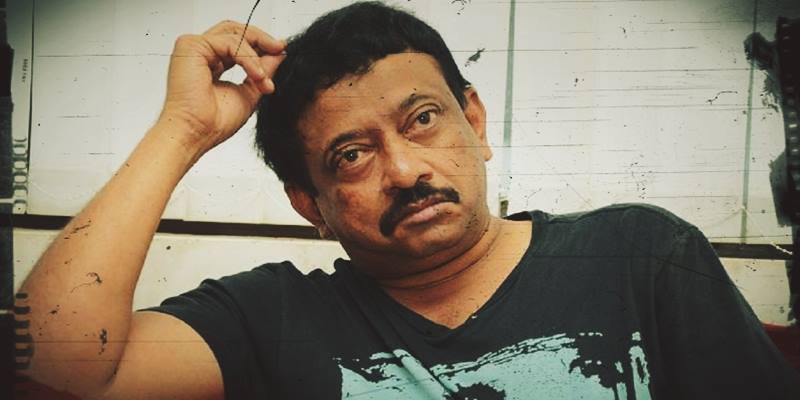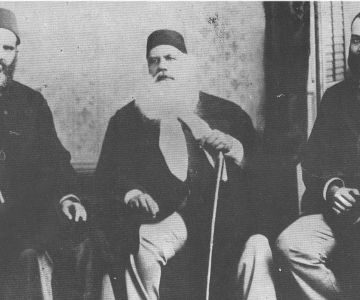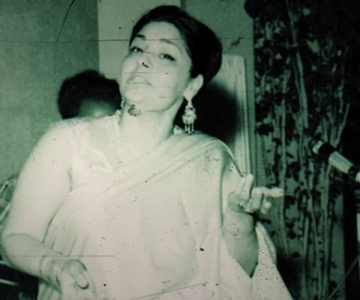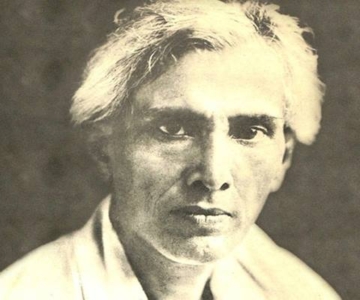The work of Ram Gopal Varma and his associates is ushering in a new era of Bollywood cinema
If there is one individual and talent who has been instrumental in shaping the current Indian cinema, it is Ram Gopal Varma, aka RGV. The fact that I, in Pakistan, am writing about an Indian filmmaker may be thought a little odd; but whether we like it or not, cable television has institutionalised the demand for Indian films here in Pakistan. While the country’s cinema houses are being turned into hideous plazas that violate practically every building code there ever was, the rise of the multiplex is not only luring but also creating a class of loyal cine-goers in our neighbouring country. And there, RGV seems to be ruling the roost. During my visit to Delhi last year, I was informed that all shows for his latest film Sarkar had been sold out weeks in advance.
Thus was I forced to turn to a pirated version procured from a snazzy DVD shop in Lahore. The owner informed me that new laws were on the cards that would soon put pirated DVDs and CDs out of business. However, on my last visit to that outlet, sales were booming as usual. Piracy is too profitable a business and is far too highly in demand to be phased out through the mere enactment of law. Indian cinema thrives and whatever we choose to make of it, Bollywood is here to stay. In any case, the history of subcontinental cinema – and for that matter, classical music – is deeply complex and subverts political and geographical borders.
But I digress: RGV had already established himself in the Telegu film world but his entry into the mainstream Hindi cinema came about with the production of Rangeela in 1995, the film that made Urmila a star. Rangeela had all the right ingredients: masala , AR Rehman’s first score for a Hindi film, the flamboyant Urmila and the streetwise Aamir Khan. It was fresh and unusual and combined flashes of realism with high-quality cinematography. After that film, there was no looking back. Since then, RGV has dominated Bollywood: not so much in commercial terms, but in the spheres of innovation and presenting cutting-edge cinema with subject matters that are diverse as well as peculiar. The natural death of the parallel ‘art’ cinema and the strangulating limits of formula Indian films have provided RGV and his growing team with space to appropriate and turn the discourse around.
At the same time, RGV has also undone the one-man show tendency that underscores the South Asian ethos. Having set up a production house with a team of producers, directors and technicians, RGV has nurtured a whole new wave of creative personae. These people are not on-the-job trainees but individuals with style, distinctive voices and attitudes. In recent years, Varma has released several films by his repertoire of ten directors; these include the stylish Darna Mana Hai (You Can’t be Scared), Main Madhuri Dixit Banna Chahti Hoon (I Want to be Madhuri Dixit), My Wife’s Murder and James . RGV is a non-conformist, and his horror flick Bhoot (Ghost) caused one cine-goer to suffer a heart attack, while the press reports that another viewer has sued RGV for “mental torture.” Such is the power of the celluloid universe!
The natural death of the parallel ‘art’ cinema and the strangulating limits of formula Indian films have provided RGV and his team with space to appropriate and turn the discourse around
In a 2003 interview with Time Asia , RGV maintained that, “Bollywood is going through a generation change. For the last 15 years, song and dance romances and family dramas ruled and Bollywood became trapped into thinking that without songs, a film couldn’t work. . . Now, there’s a new set of filmmakers in town. Why do we always have to break into song? It doesn’t make sense to a Western audience and I’m 42 years old: I live in this country and I’ve still not got used to it.”
The massive change in Indian cinema that was predicted by RGV is already evident. It’s true that unexciting fare continues to be churned out each year; yet mainstream Indian cinema is discovering new frontiers and treading extremely unfamiliar territories. RGV and his associates are leading this march. While Varma has directed and produced dozens of films during his career, the following six films are the most celebrated.
1: Satya (1988)
Satya was was critically acclaimed as well as being a box office hit. The film captures a brutal realism that nevertheless allows the humane yearnings of its anti-hero Satya to shine through. Its plotline and mood echo the gang wars and violence experienced by Mumbai during the 1990s. Cinematographically, the film is outstanding as it plays with various shooting techniques to eerily underscore the emptiness of alley-ways, the sleaze of dens and pubs that are, if anything, symbols of urban criminality and its direct link with poverty. Troubled urban soul Satya (played by J Chakravarthy) has no surname, no roots or family ties, and finds himself increasingly consumed by the criminal underworld. Once entrenched there, he is rational, cold-blooded and is undisturbed by his vocation. However Satya, the man inside, remains alive and his understated romance with Vidya (Urmila Matondkar), the girl next door, is an antidote to the grimness and meaninglessness of his life.
Love’s survival in violence becomes a haunting theme of the film and Bhiku Mhatre’s (played by Manoj Bajpai who established his credentials in Satya) cynicism as the gang’s head honcho borders on profundity hidden under coarse street language. Even the police characters exist in shades of grey; there are no clear villains. Imaginative lighting and photography, Gulzar’s lyrics and experimental music make this a powerful and provocative venture. Satya is the brazen portrayal of a confused underworld, with characters as real as you can get in world-class cinema. The climax scene – where Satya pleads with his girlfriend to listen to him – while he is being shot by the cops, is a classic frame: enough to derail anyone from black and white belief systems.
2. Company (2002)
Company was a star-studded fare featuring Ajay Devgan, Vivek Oberoi, Manisha Koirala and Antara Mali amongst others. Company approached the gangster genre through a new lens and language. Ingenious and complex in its characterisation, the film narrates the tale of two great friends, Malik (Ajay Devgan) and Chandu (Vivek Oberoi). Their mutually destructive friendship shifts from the streets of Mumbai to Hong Kong and then to Nairobi. Malik, the lead operative of an underworld king, recruits Chandu to expand the crime empire. Later, Malik and Chandu form their own crime ‘company’ and shift their base to Hong Kong with remote-controlled underground activity in India.
From: Company
Human follies lead to misunderstandings and these best of friends turn into sworn enemies with both trying to eliminate the other. Malik stays put in Hong Kong and Chandu shifts to Nairobi, and this is how the death chase is orchestrated. The film boasts twists and turns that are truly unexpected and morally murky. The ending is macabre and tragic, and the film remains well-executed right to the end. There is a microcosmic quality to the mafia treatment as the plot is woven with real life events in India: the realism is stark, especially if one is well-acquainted with the Indian scene. The film provides no sense of relief and can be heavy in its progression, yet brilliant cinematography and strong performances make Company a treat to watch. It’s RGV at his best.
3. Bhoot (2003)
Moody, bloodless and convincing, Bhoot is arguably the best horror film produced by Bollywood. Admittedly, some of the shots have been lifted from various sources; yet it constitutes the ultimate scare in the heart of an urban jungle that defies the bhoot bangla (haunted house) genre that rules even Hollywood. When the secular Vishal (Ajay Devgan), finds a flat on the 12th floor of a tall apartment building, he disregards the information that the earlier female resident committed suicide by jumping off the balcony. Non-superstitious Vishal does not let this affect his decision to rent the place, but he doesn’t tell his wife Swati (Urmila Matondkar) about the story. When Swati finds out about the young woman’s death, she starts losing herself in eerie otherworldliness and starts hallucinating. The first ghost appearance is a cinematic masterpiece: the sequence remains deeply imprinted on viewers’ minds. Bhoot can keep one on the edge throughout. RGV’s frames speak of his creativity, for the film has no songs and no comic interludes. The climax is a little problematic for those not given to the supernatural, yet the subject evolves over the film. The sound effects and background score are gripping and of international standards. Bhoot got Urmila several awards, including the national film award, since her performance was extraordinary and her fear as real as life itself.
4. Sarkar (2005)
Portraying the alternative state power personified by good-hearted mafiosos , critics have found Sarkar controversial. Veering between Godfather on one hand and Hamletesque anguish on the other hand, this is a well-crafted piece of cinema. RGV innovates and gets all too experimental with the treatment of the theme – yet this is precisely where the film’s strength lies. It is not a mere adaptation of the classic Godfather .
Sarkar (Amitabh Bachchan) has two sons. The elder, Vishnu (Kay Kay), is a film-maker and the younger, Shankar (Abhishek Bachchan), has recently returned from the US. Vishnu shoots the hero of his under-production film out of jealousy, since Vishnu is attracted to its sultry heroine. Sarkar sides with the victimised heroine, who is the prime witness against Vishnu. Father and son fall out, and Sarkar throws Vishnu out of his house, who then joins the ranks of Sarkar’s rivals. The plot thickens as a Dubai-based gangster is spurned by Sarkar on ethical grounds; a conspiracy is hatched and Sarkar is arrested. Much more happens until Vishnu is set up to kill his father Sarkar, and the film ends in a sordid revenge resolution.
Through the course of the film, Amitabh faintly resembles Shiv Sena leader Bal Thackeray, but this is only in style. While Sarkar can’t be said to have the best of scripts, it is a polished contemporary tale and an appropriate comment on the state of Indian society and law enforcement. That it achieves this without the self-consciousness of an ‘art film,’ is all to RGV’s credit.
5. Darna Mana Hai (2003)
From: Darna Mana Hai
This film is an RGV production and was directed by a Varma protégé, Prawaal Raman, who weaves six stories together into one cinematic narrative. Fresh and non-conformist in its format, Darna Mana Hai had no songs and can easily scare or move the strong-hearted. All the subplots are integrally linked. The film starts with the formula scene of a honeymooning couple’s car breaking down in a jungle. In a different yet linked storyline, six friends shelter in a deserted building in the middle of the jungle, telling stories to entertain each other. The eerie tales come true when they find themselves part of a horrifying, larger story. Another story concerns a teacher who, as a child, was instrumental in a murder. The child in him returns in the form of a student and makes him insane. Imagine Shilpa Shetty buying apples from a weird vendor: everyone who eats the apples – including her husband – is transformed into an apple. My personal favourite is the tale of an hotelier who kills guests if they smoke inside the hotel, a story that features Saif and Boman Irani in the lead roles. While some of the subplots are better than the others, it is remarkable as a director’s debut and a superb production. It’s the firstof its genre in South Asian cinema, and a grand experiment no matter which way you look at it.
6. Mein Madhuri Dixit Banna Chahti Hoon (2003)
Featuring Antara Mali in the lead role, this film has been directed by another debutante, Chandan Arora, and also shatters the standard formula to smithereens. Living in the small town of Gajrola, Chutki (Antara Mali) aspires to become the diva Madhuri Dixit. She wants to escape to Mumbai to pursue her dreams, but guess what! Her parents decide to get her married instead. So her childhood friend and secret lover Raja convinces her to marry him and promises to help her get to Mumbai. After getting married, Chutki and Raja leave for Mumbai, facing all manner of reality-checks since the road to Bollywood is bumpy and far from glamorous. Finally, Chutki is chosen to perform in a music video and subsequently, signs on a film. But the film flops, and her heart is broken.
From: Mein Madhuri Dixit Banna Chahti Hoon
The plot sounds simple, and it is; yet the image of a deserted cinema house becomes almost metaphorical. Disillusioned, Raja and Chutki return to Gajrola, but as they try to settle down in their small town life, the Mumbai contact arrives with the news that except in the cities, Chutki’s film has been successful. She can reasonably look forward to an acting career. With this ending, the film redeems itself for Chutki and also the audiences. Yet the questions raised by the film are poignant: they relate to life-changing choices made by people competing in cut-throat metropolises. Off-beat, technically-sound and endearing, this is a must-see film.
There is a microcosmic quality to the mafia treatment as the plot is woven with real life events in India: the realism is stark, especially if one is well-acquainted with the Indian scene
Ram Gopal Varma and his production house are busy weaving more stories; the past decade was merely the first phase of this exciting wave of experimentation. Since RGV attracts India’s creative best, it is likely that he will not yet start repeating himself. Also, India’s current transformation with increasing prosperity, urbanisation and confidence will provide the impetus to do even better.
We in Pakistan can learn from these trends. Iranian films are a case in point, as they have demystified the myth of censors, freedom and the demands of the market. Cinema is really about talent and taking the lead. With the growing chances of Indian films being screened in Pakistan, we may have some hope. Otherwise, let the cable and DVD businesses flourish in this entertainment-starved land of the pure



